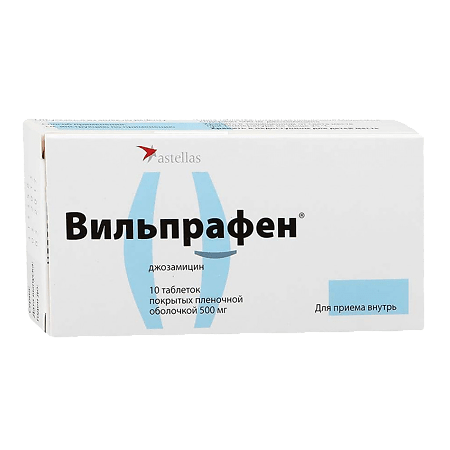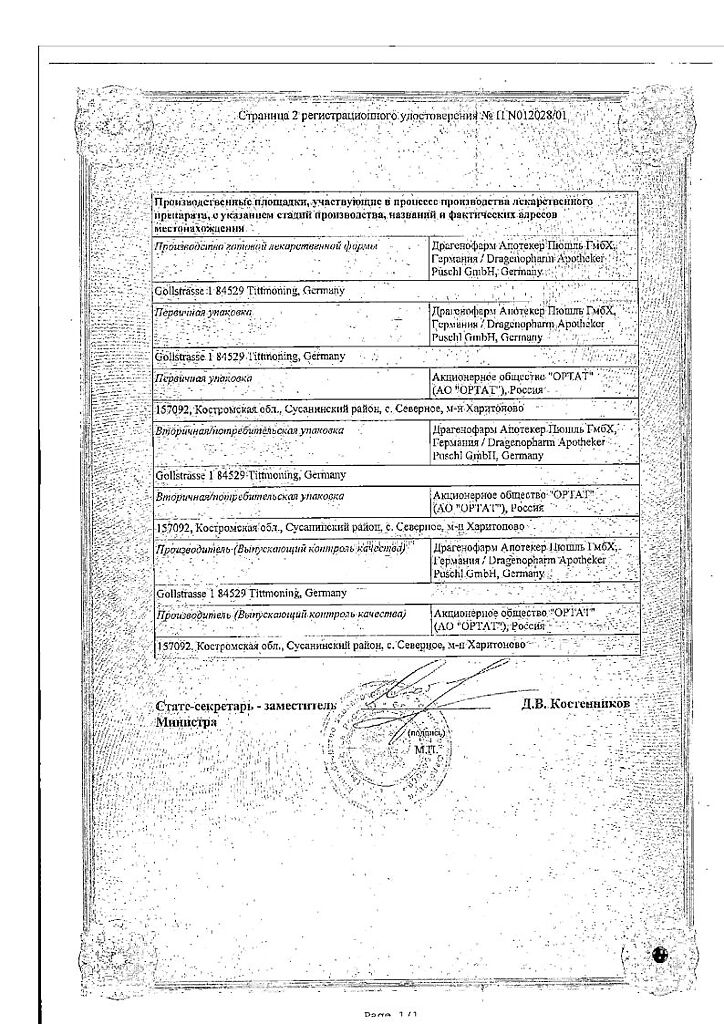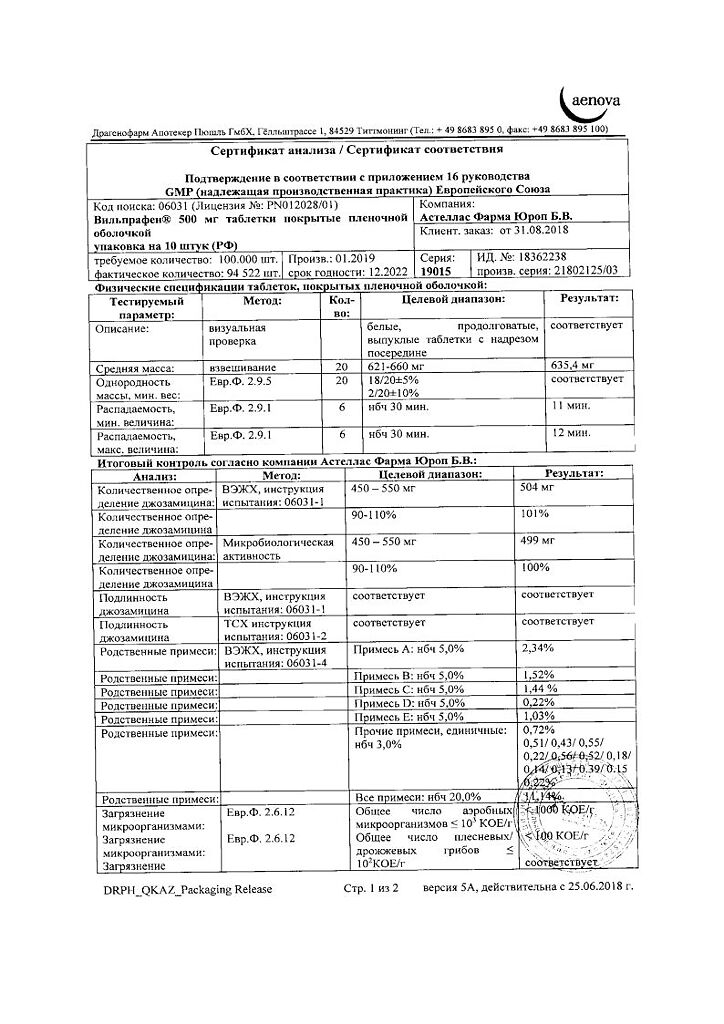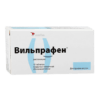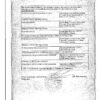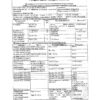No products in the cart.
Vilprafen, 500 mg 10 pcs
€1.00
Out of stock
(E-mail when Stock is available)
Description
Pharmacotherapeutic group:
Macrolide antibiotic.
ATC code: J01FA07
Pharmacological properties
Pharmacodynamics.
An antibacterial drug from the group of macrolides. Mechanism of action is connected with disruption of protein synthesis in a microbial cell due to the reversible binding to 508-subunit of ribosome. In therapeutic concentrations, as a rule, it has a bacteriostatic effect, slowing down the growth and reproduction of bacteria. Bactericidal effect is possible at high concentrations in the center of inflammation.
Josamycin is active against Gram-positive bacteria (Staphylococcus spp. including methicillin-sensitive strains of Staphylococcus aureus), Streptococcus spp, including Streptococcus pyogenes and Streptococcus pneumoniae, Corynebacterium diphtheriae, Listeria monocytogenes, Propionibacterium acnes, Bacillus anthracis, Clostridium spp. Peptococcus spp., Peptostreptococcus spp.), Gram-negative bacteria (Neisseria meningitidis, Neisseria gonorrhoeae, Moraxella catarrhalis, Bordetella spp. Brucella spp., Legionella spp., Haemophilus ducreyi, Haemophilus influenzae, Helicobacter pylori, Campylobacter jejuni), Bacteroides fragilis sensitivity may be variable), Chlamydia spp, including C. trachomatis, Chlamydophila spp. including Chlamydophila pneumoniae (formerly called Chlamydia pneumoniae), Mycoplasma spp. including Mycoplasma pneumoniae, Mycoplasma hominis, Mycoplasma genitalium, Ureaplasma spp. Treponema pallidum, Borrelia burgdorferi.
As a rule it is not active against Enterobacteriaceae, so it has little effect on the microflora of the gastrointestinal tract. In some cases it remains active with resistance to erythromycin and other 14- and 15-member macrolides (streptococci, staphylococci). Resistance to jozamycin is less common than to 14- and 15-member macrolides.
Pharmacokinetics.
After oral administration, jozamycin is rapidly absorbed from the gastrointestinal tract; food intake does not affect bioavailability. Maximum concentration of giovamycin in plasma is reached in 1 hour after intake. When administered in a dose of 1 g, maximum concentration in blood plasma is 2-3 mcg/ml. About 15% of giovamycin is bound to plasma proteins. Jozamycin is well distributed in the organs and tissues (except for brain) creating concentrations exceeding plasma concentration and remaining at therapeutic level for a long time.
Josamycin generates particularly high concentrations in the lungs, tonsils, saliva, sweat and tear fluid. Concentration in sputum exceeds concentration in plasma by 8-9 times. It passes the placental barrier and is secreted into breast milk. Josamycin is metabolized in the liver to less active metabolites and is excreted mainly with bile. Half-life of the drug is 1-2 h, but it may be prolonged in patients with liver dysfunction. Renal excretion of the drug does not exceed 10%.
Indications
Indications
Infectious and inflammatory diseases caused by microorganisms sensitive to the drug:
Infections of the upper respiratory tract and ENT organs: tonsillitis, pharyngitis, paratonsillitis, laryngitis, otitis media, sinusitis, diphtheria (in addition to treatment with diphtheria anatoxin), scarlatina (in case of hypersensitivity to penicillin).
Infections of the lower respiratory tract: acute bronchitis, exacerbation of chronic bronchitis, community-acquired pneumonia, including that caused by atypical pathogens, pertussis, psittacosis.
Infections in dentistry: gingivitis, pericoronitis, periodontitis, alveolitis, alveolar abscess.
Infections in ophthalmology: blepharitis, dacryocystitis
Infections of the skin and soft tissues: Folliculitis, furunculitis, furunculosis, abscess, anthrax, rye, acne, lymphangitis, lymphadenitis, phlegmon, panarritis, wound (including postoperative) and burn infections.
Infections of the urogenital system: urethritis, cervicitis, epididymitis, prostatitis caused by chlamydia and/or mycoplasmas, gonorrhea, syphilis (with hypersensitivity to penicillin), venereal lymphogranuloma.
Diseases of the gastrointestinal tract associated with H. pylori
Gastric and duodenal ulcer, chronic gastritis, etc.
Active ingredient
Active ingredient
Composition
Composition
1 coated tablet contains:
The active ingredients are:
Josamycin – 500 mg
Additional ingredients:
Microcrystalline cellulose – 101.0 mg,
Polysorbate 80 – 5.0 mg,
colloidal silica – 14.0 mg,
sodium carmellose – 10.0 mg,
magnesium stearate – 5.0 mg,
methylcellulose – 0.12825 mg,
polyethylene glycol 6000 – 0.3846 mg,
talc – 2.0513 mg,
titanium dioxide – 0.641 mg,
aluminum hydroxide – 0.641 mg,
copolymer of methacrylic acid and its esters – 1.15385 mg.
How to take, the dosage
How to take, the dosage
Just before use, the tablet should be dissolved in a small amount of water (at least 50 ml) and thoroughly mixed to form a suspension. The resulting suspension should be taken immediately after preparation.
The recommended daily dosage for adults and adolescents over 14 years of age is 1 to 2 g of giosamycin. The daily dose should be divided into 2-3 doses. If necessary, the dose may be increased up to 3 g per day.
Children at the age of 1 year have an average body weight of 10 kg. The daily dosage for children with a body weight of at least 10 kg is determined at the rate of 40-50 mg/kg of body weight daily, divided into 2-3 doses: for children with a body weight of 10-20 kg the drug is prescribed at 250-500 mg (1/4-1/2 tablet dissolved in water) 2 times a day, for children with a body weight of 20-40 kg the drug is prescribed at 500 mg-1000 mg (1/2 tablet – 1 tablet dissolved in water) 2 times a day, over 40 kg – at 1000 mg (1 tablet dissolved in water) 2 times a day.
The duration of treatment is usually determined by the doctor, ranging from 5 to 21 days, depending on the nature and severity of the infection. According to the WHO recommendations, the duration of treatment of streptococcal tonsillitis should be at least 10 days.
In the regimens of anti-Helicobacter therapy, josamycin is prescribed in a dose of 1 g 2 times a day for 7-14 days in combination with other drugs in their standard dosages (famotidine 40 mg/day or ranitidine 150 mg 2 p/day + josamycin 1 g 2 p/day + metronidazole 500 mg 2 p/day; omeprazole 20 mg (or lansoprazole 30 mg or pantoprazole 40 mg or esomeprazole 20 mg or rabeprazole 20 mg) 2 p/day + amoxicillin 1 g 2 p/day + jozamycin I g 2 p/day; omeprazole 20 mg (or lansoprazole 30 mg or pantoprazole 40 mg or esomeprazole 20 mg or rabeprazole 20 mg) 2 p/day + amoxicillin 1 g 2 p/day + jozamycin 1 g 2 p/day + bismuth tricali dicitrate 240 mg 2 p/day; famotidine 40 mg/day + furazolidone 100 mg 2 p/day + josamycin 1 g 2 p/day + bismuth tricalium dicitrate 240 mg 2 p/day).
In case of gastric mucosal atrophy with achlorhydria confirmed by pH-metry: amoxicillin 1 g 2 p/day + jozamycin 1 g 2 p/day + bismuth tricalium dicitrate 240 mg 2 p/day.
In cases of common and globular acne, we recommend prescribing giovamycin at a dose of 500 mg twice daily for the first 2-4 weeks, followed by 500 mg of giovamycin once daily as maintenance treatment for 8 weeks.
Interaction
Interaction
Josamycin is a substrate and inhibitor of cytochrome P4503A isoenzymes. Concomitant use of giosamycin and drugs that are substrates of cytochrome P4503A may increase the concentration of simultaneously used substances in blood plasma.
Antihistamines
Josamycin may interact with antihistamines containing terfenadine or astemizole, delaying excretion of these drugs, which, in turn, may lead to critical cardiac arrhythmias (see section “Special Precautions”).
Simultaneous use with ergot alkaloids may cause increased vasoconstriction. Concomitant use of ergot alkaloids and jozamycin should be avoided, and if peripheral nervous system signs and symptoms of ergot poisoning (ergotism) occur, the drug should be stopped and appropriate treatment such as local application of heat and administration of vasodilators should be provided.
Cyclosporine and tacrolimus
Concomitant use of josamycin and cyclosporine/tacrolimus may lead to increased cyclosporine/tacrolimus concentrations leading to renal damage. Plasma concentrations of cyclosporine/tacrolimus should be monitored regularly.
Triazolam
Josamycin may potentiate the effects of triazolam and cause drowsiness. In case of triazolam overdose, temporary discontinuation of the drug is recommended.
Bromocriptine
Josamycin may increase the effect of bromocriptine and cause drowsiness, dizziness, ataxia, etc. If intoxicated with bromocriptine, temporary discontinuation of the drug is recommended.
Theophylline
It is reported that josamycin increased serum theophylline levels in children. Theophylline concentrations may be elevated due to a prolonged half-life. If theophylline is toxic, additional doses of theophylline should be adjusted accordingly with regard to theophylline serum concentrations.
Anticoagulants for oral administration
Josamycin may increase the effect of oral anticoagulants, such as warfarin and its derivatives, which are vitamin K antagonists. Josamycin decreases vitamin K production by intestinal bacteria. In case of bleeding it is recommended to stop taking giovamycin and/or anticoagulants for oral administration and use vitamin K depending on the severity of bleeding or the degree of coagulopathy on the basis of prothrombin time or international normalized ratio.
P-glycoprotein substrates
Co-administration of macrolides with P-glycoprotein substrates has been reported to increase serum concentrations of the latter. In particular, co-administration of gesozamycin and digoxin may lead to increased concentration of digoxin in blood serum, which, in turn, leads to intoxication with digoxin, including cardiac arrhythmia. Clinical monitoring is indicated during treatment with josamycin and after its withdrawal, as well as monitoring of digoxin serum concentrations.
Special Instructions
Special Instructions
Serious adverse skin reactions
Serious adverse skin reactions, such as toxic epidermal necrolysis and Stevens-Johnson syndrome, have been noted in some patients who received gesomycin. In case of severe adverse skin reactions, josamycin should be discontinued and appropriate therapy and/or appropriate measures should be carried out.
Hepatic dysfunction
In patients with hepatic dysfunction the concentration of the drug in plasma may be increased. Thus, giosamycin should be used with caution in patients with hepatic dysfunction.
Concomitant use with terfenadine or astemizole
The co-administration of josamycin and antihistamines containing terfenadine or astemizole should be performed with caution because it may cause delayed excretion of these drugs, which, in turn, may lead to critical heart arrhythmias.
Cross-resistance between macrolide antibiotics
Cross-resistance between other macrolide antibiotics may occur.
Contraindications
Contraindications
– hypersensitivity to jozamycin and other components of the drug;
– hypersensitivity to other macrolides;
– severe liver function disorders;
– children with body weight less than 10 kg (for this dosage form).
Josamycin should be used with caution in patients with impaired liver function.
The co-administration of giosamycin with ergot alkaloids; antihistamines containing terfenadine and astemizole; theophylline; bromocriptine; cyclosporine and tacrolimus; oral anticoagulants should be avoided.
Side effects
Side effects
Listed below are the adverse reactions that may occur when taking giovamycin.
The frequency of adverse reactions is defined as follows: very common (â¥1/10); common (â¥1/100 – < 1/10), infrequent (â¥1/1000 -< 1/100), rare (â¥1/10000 – < 1/1000), very rare (< 1/10000), unknown (cannot be estimated based on available data).
Cardiac side: unknown – arrhythmia.
Gastrointestinal tract side:
General disorders and disorders at the site of administration: unknown – facial edema.
Hepatic and biliary tract disorders:
Immune system disorders: rare – anaphylactic reactions.
Infectious and parasitic diseases: very rare – pseudomembranous colitis.
Metabolic disorders and eating disorders: rarely – decreased appetite.
Skin and subcutaneous tissues:
Overdose
Overdose
Till now, there are no data on specific symptoms of poisoning.
In case of overdose, the symptoms described under “Adverse effects” should be assumed, especially on the gastrointestinal side.
Pregnancy use
Pregnancy use
Similarities
Similarities
Additional information
| Shelf life | 3 years. Do not use after the expiration date. |
|---|---|
| Conditions of storage | In a light-protected place, at a temperature not exceeding 25 °C |
| Manufacturer | Dragenopharm Apotheker Püschl GmbH, Germany |
| Medication form | pills |
| Brand | Dragenopharm Apotheker Püschl GmbH |
Related products
Buy Vilprafen, 500 mg 10 pcs with delivery to USA, UK, Europe and over 120 other countries.

